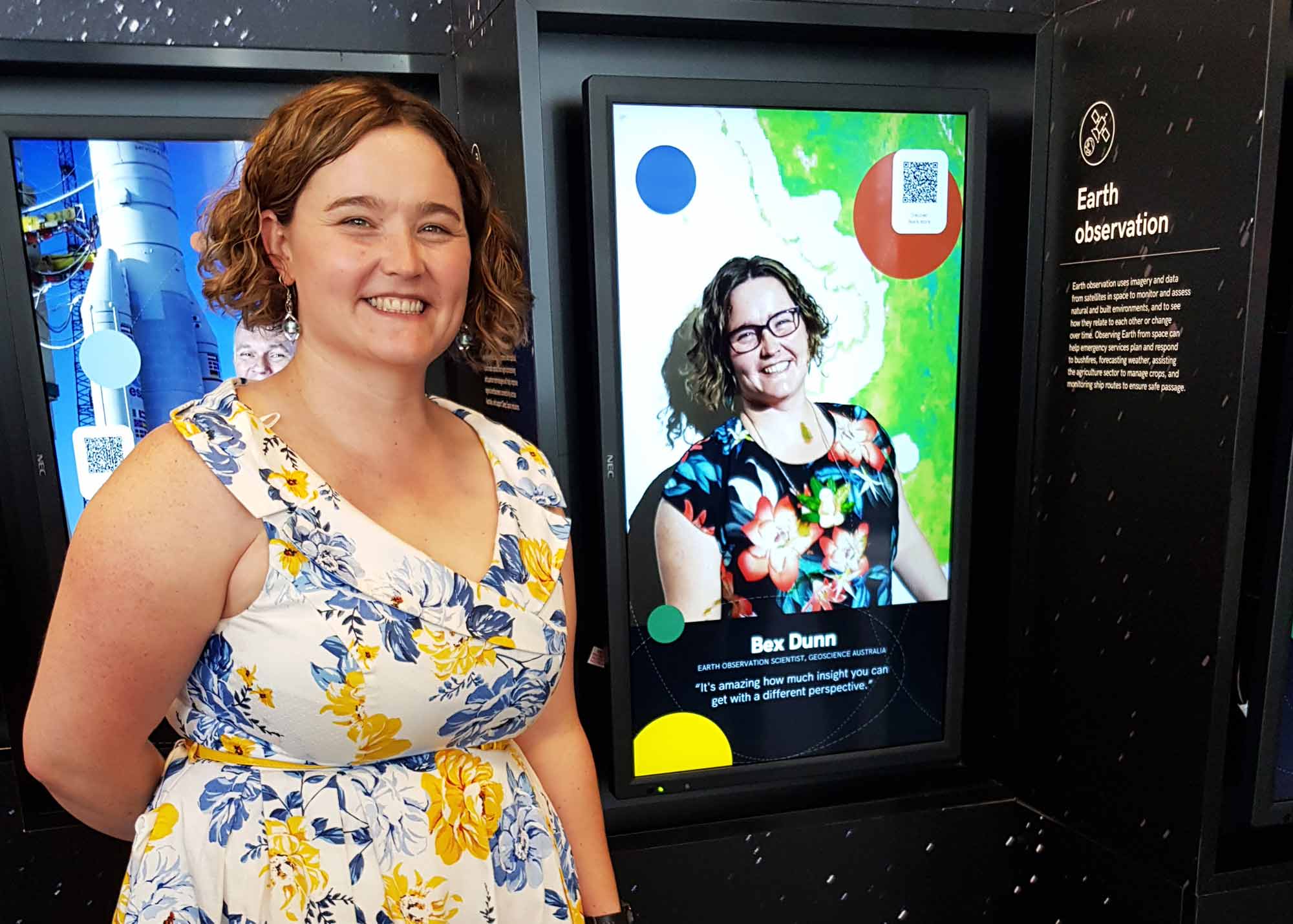Big picture people Meet Bex Dunn: wetlands explorer
This Earth observation scientist is diving deep into satellite data to better understand Australia’s wetlands.
Page last updated:18 June 2024
Bex Dunn has had a meandering career path, but in hindsight it almost looks like she planned it.
An interest in water systems dynamics and skills in programming and modelling have come together (in a confluence?) in her role as an Earth Observation Scientist with Digital Earth Australia.
Bex was recently profiled for the Australian Space Discovery Centre's 'People in the Space Sector' exhibition, so we caught up with her too:
What do you work on?
I make products based on remotely sensed or satellite data — particularly as it applies to surface water and wetlands across Australia.
Why wetlands?
I'm very interested in watery things and wetlands are super important. They provide habitat for a whole bunch of species that breed in them, feed in them, and transport through them. And they're one of those things that people don't realise are vitally important to the environment. Wetlands also play an important role in Aboriginal and Torres Strait Islander culture — there are many stories about the cultural significance of water. Also, they're cool, and sometimes I like swimming in them!
How did you become an Earth observation scientist?
I attended a National Youth Science Forum as a teenager and even though they encouraged people to study science, I wanted to make yacht design and naval architecture my career. So I went to Sydney to do a degree in mechanical engineering and naval architecture, then I started a PhD at University of Tasmania in naval architecture on wave slamming and ride control on ferries.
I worked for a yacht designer and all sorts of weird stuff — I stopped counting at around 30 different jobs! My PhD was interrupted by some mental health issues, so I went to work for some lovely folk at a single malt whiskey distillery, and running tours was pretty good science communication training. Then I went back to uni and did a second honours in physical oceanography.
I had friends who were glaciologists and who knew about Geoscience Australia. They said, "You'd like this, it's all rotating maths and waves". I applied to the GA Graduate Program and got in. I found out that rocks are waves, and did tsunami modelling. Eventually I applied to work with Digital Earth Australia, and with my programming and modelling backgrounds, all my previous work was actually very aligned to the role.
What's the most satisfying part of your work?
I'm most satisfied when my work is useful — when my code not only runs but gets used. The DEA Wetlands Insight Tool that we produced has been used for Queensland wetlands mapping and it's great to be able to point to that and say it made an impact.
Australia is also just an extraordinarily cool place, and there are so many different ecosystems and beautiful landforms to look at.
What do you wish people knew about your job?
People generally understand the ideas behind satellite data pretty quickly. The only thing people don't understand are the job titles! No one knows what an 'Earth observation scientist' or a 'remote sensing scientist' is, but they understand what we do.
What do you see in the future of Earth observation science?
Forecasting is the next big thing: tying what we can see has happened in the past with other datasets to look forward — it's the next step.


